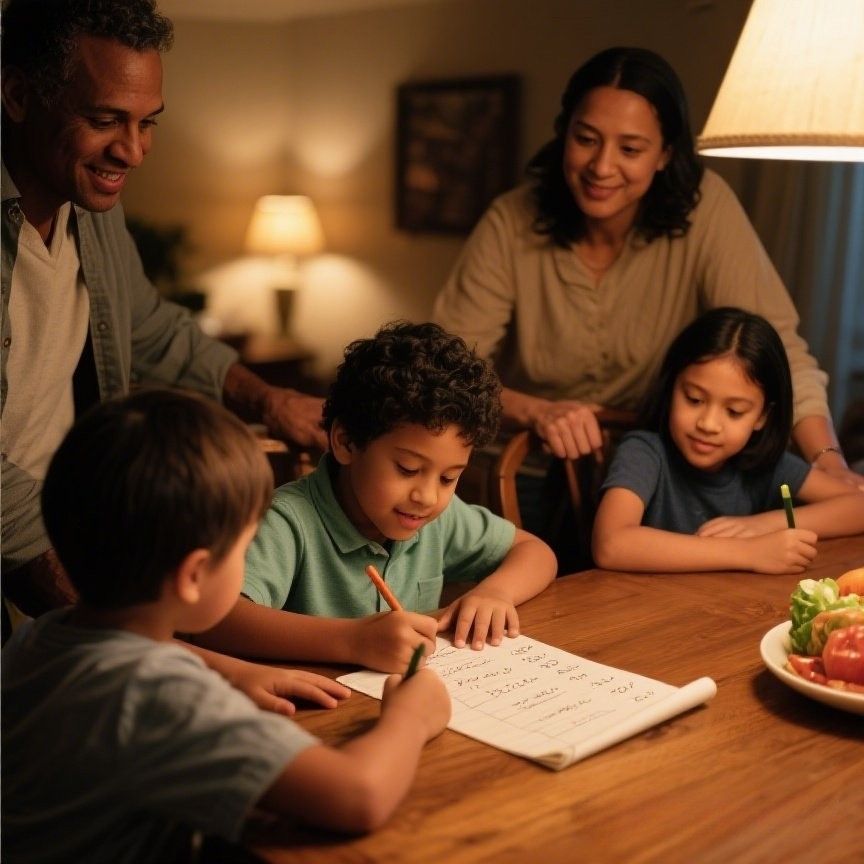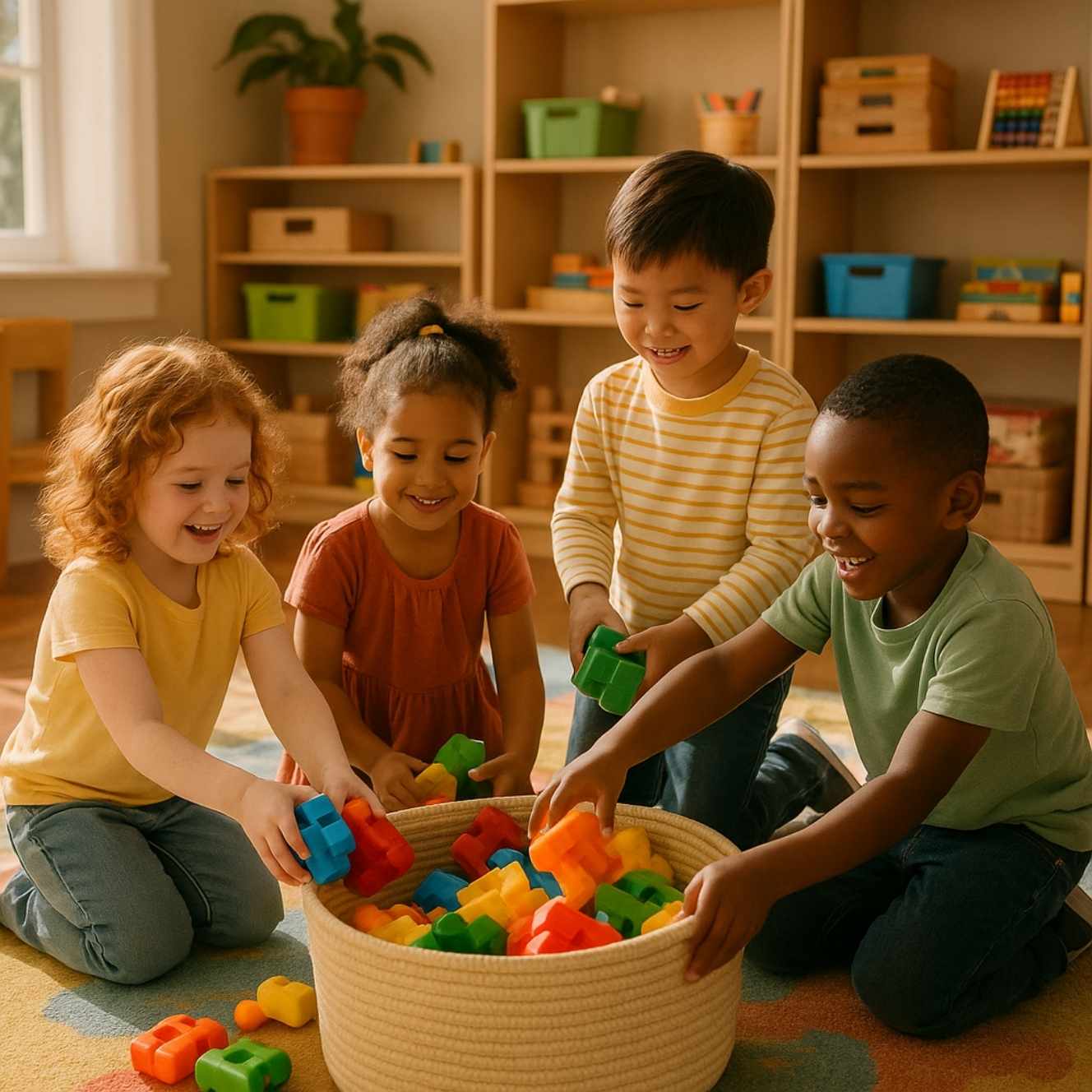Introduction
Responsibility is often framed as a virtue to be taught later in childhood, yet research and classroom experience show that even toddlers can grasp—and benefit from—the basics of helping, tidying, and caring for others. When adults invite young children to water the bean sprout on the windowsill or hand out napkins at snack time, they are doing far more than freeing up a teacher’s schedule. They are wiring a developing brain for self-regulation, empathy, and perseverance. In early childhood (roughly ages three to eight), neural pathways are astonishingly malleable; every routine chore or small promise kept lays another thread in the complex tapestry of executive function, social understanding, and self-esteem.
This article unpacks how age-appropriate responsibilities accelerate growth across four key domains—cognitive, emotional, social, and practical life skills—while also offering concrete strategies for parents and educators to strike the right balance between structure and play. By the end, you’ll see why the phrase “Can you help me?” may be one of the most powerful developmental prompts a young child can hear.
1. Responsibility as a Cognitive Workout
Children build executive function the same way a gymnast builds core strength: through repeated, incremental challenges that demand planning and follow-through. When a five-year-old remembers to put crayons back in color-coded bins, the task seems trivial to adults, but it quietly engages working memory (“Where do the reds go?”), inhibitory control (“I won’t start a new picture yet”), and cognitive flexibility (“Blue bin is full; I’ll stack gently on top”). Neuroscientists note that these three sub-skills form the foundation of problem-solving and academic readiness. Children who routinely practice small duties at home or school show earlier mastery of sequencing, better attention spans, and, later, higher reading and math scores because their brains have rehearsed the art of organizing information.
Moreover, responsibility links abstract concepts to tangible outcomes. A daily job chart bridges the gap between numbers on paper and real-world consequences—“If I check the box all week, I earn Friday’s puzzle pick.” This concrete feedback loop strengthens cause-and-effect reasoning, a critical component of STEM learning. In essence, chores become living flashcards for logic and prediction.

2. Emotional Growth: From Impulse to Integrity
Handing a six-year-old the task of feeding the class guinea pig may stir excitement, but it also stirs self-awareness: “I have to remember tomorrow, not just today.” Consistently meeting that expectation builds what psychologists call self-efficacy—the belief that one’s actions matter. Each micro-success deposits emotional currency in a child’s internal bank, buffering against future frustrations such as a tricky math worksheet or a lost soccer game.
Responsibility likewise cultivates empathy. When children care for living things—watering seedlings, refilling a pet’s water bottle—they learn to anticipate needs outside their own. The act of imagining “Is Pepper hungry?” exercises perspective-taking muscles that later translate into compassionate friendships and conflict resolution. Importantly, adults must frame mistakes (like spilled water) not as failures but learning detours; doing so teaches resilience and healthy risk-taking rather than fear of disappointment.

3. Social Skills: Cooperation, Communication, Community
While solo chores sharpen self-discipline, group responsibilities—setting the lunch table together or co-captaining the recess equipment cart—forge cooperation. To complete a shared objective, children practice verbal negotiation (“I’ll carry the cups, you grab the plates”), role assignment, and turn-taking, mirroring the teamwork demanded in later group projects and workplaces. Teachers report that students who rotate classroom jobs show fewer peer conflicts because accountability becomes a collective norm rather than a top-down rule.
Responsibilities also act as social equalizers. Even shy children who seldom speak during circle time can shine as “line leader,” gaining peer recognition without needing advanced language skills. This spreads influence across the classroom, reducing cliques and promoting inclusivity. Over time, youngsters internalize a community-minded ethos: My classroom works because everyone contributes; therefore I belong.

4. Life Skills and Independence: Preparing for the Bigger World
The jump from tying one’s own shoes to later managing homework deadlines is shorter than it appears. Early household tasks—folding washcloths, wiping a spill—map directly onto the “adulting” skills teens and young adults need: personal hygiene, time management, and basic domestic competence. Studies tracking adolescents show that those who handled regular chores in preschool are more likely to graduate high school on time and maintain part-time jobs because they view routine responsibilities as familiar, not burdensome.
Practical tasks also demystify trial and error. When a seven-year-old follows a pictorial recipe to mix pancake batter, small mismeasures provide safe lessons in precision and adaptation (“Too runny? Add flour.”). These iterative cycles echo scientific thinking and entrepreneurial grit, reinforcing that setbacks invite tweaks, not surrender.

5. Strategies for Parents and Educators
- Match task to development, not age: A tall four-year-old may wield a hand-held vacuum easily, while a shorter six-year-old may do better with dusting low shelves. Observe physical and emotional readiness rather than birthdays.
- Use visual supports: Picture charts, color-coded bins, or step-by-step photo sequences reduce verbal overload and empower non-readers to self-check their progress.
- Offer limited choice: “Would you like to water the plant or feed the fish today?” fosters autonomy without overwhelming. Choice also reinforces the idea that responsibility is a privilege granted for reliability, not a punishment assigned.
- Explain the “why”: Linking chores to observable outcomes—“The plant droops when dry; water makes leaves strong”—helps children internalize motivation beyond adult approval.
- Embed reflection: A quick end-of-day chat (“What went well with your job today?”) turns routine into a mindfulness practice, sharpening meta-cognition and gratitude.
- Celebrate effort over perfection: Sticker charts, high-fives, or a simple “I noticed how carefully you stacked those books” spotlight diligence. Avoid re-doing tasks in front of the child; subtle corrections can wait until later to preserve ownership.
- Scale responsibility with growth: As competence blooms, upgrade from single-step tasks (putting away shoes) to multi-step sequences (organizing the entryway). This gradual escalation mirrors academic scaffolding and keeps engagement high.
6. Cultural and Socioeconomic Contexts
Responsibilities look different across cultures, yet the developmental benefits persist. In many Filipino and Latin American households, for example, older siblings play a crucial role in caregiving for younger brothers or sisters—an arrangement that research links to heightened leadership and empathy in adolescence. Conversely, Scandinavian preschool models often stress communal outdoor tasks such as garden maintenance, reinforcing environmental stewardship alongside cooperation.
Economic context also shapes opportunity. A child in an urban apartment may not have pets or gardens but can still monitor recycling, track electricity usage, or assist in budgeting grocery lists. The key is meaningful responsibility—one that visibly affects family or classroom life—rather than the specific content of the task. Recognizing and respecting these variations prevents a one-size-fits-all doctrine and empowers caregivers to adapt guidance to their realities.

7. Balancing Responsibility with Play
Assigning duties should never eclipse spontaneous exploration. Play remains the primary engine of creativity and emotional processing in early childhood. The sweet spot is a rhythm: brief, consistent chores that bracket generous blocks of free play. Educators often employ a “work then play” schedule—ten minutes of job time followed by forty minutes of centers or outdoor activity—capitalizing on fresh executive-function energy without causing burnout.
Parents can mimic this ebb and flow at home. A Saturday morning might begin with cooperative sheet changing, progress to a gardening project, and culminate in an unstructured picnic where adults relinquish agenda control. This cadence teaches children that responsibility and joy are not rivals but partners, each making the other more satisfying.

Conclusion
When we invite children into the daily choreography of caring—tending pets, organizing crayons, preparing simple meals—we are not stealing childhood but enriching it. These small acts braid cognitive agility, emotional resilience, social empathy, and practical know-how into a sturdy lifeline that will support future challenges, from algebra equations to first job interviews. By tailoring responsibilities to ability, framing mistakes as steppingstones, and honoring the universal need for play, adults craft an environment where young minds learn the timeless lesson that capable hands can also shape capable hearts.





